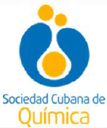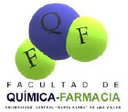
7th International Chemistry Symposium
SIQ 2019
Chlordecone (CLD) and β-hexachlorocyclohexane (β-HCH) are persistent organic pollutants of high environmental stability that cause severe affectations to health. The concentrations of these pesticides in the environment are low even for the modern analytical methods; therefore their determination represents an analytical problem. The radioisotopic labeling of these compounds for their use as radiotracers could represent a solution for this problem. The present work theoretically evaluates the possibility of using complexes of 1-iodine-chlordecone (I-CLD) and β-1-iodine-pentachlorocyclohexane (I-β-HCH) with the most common cyclodextrins (α-, β-, and γ-CDs) as radiotracers of water polluted with CLD and HCH. The reaction of formation of these molecular inclusion complexes is studied, as well as the main types of complexes that could be obtained. The Multiple Minima Hypersurface methodology, quantum chemistry calculations based on the Density Functional Theory and a topological study of the electronic density were used to support the utilization of I-CLD@CDs and I-β-HCH@CDs complexes as radiotracers. Three types of fundamental interactions are observed: total occlusion, partial occlusion and external interaction (non-occlusion). The more stable complexes were obtained when the γ-CD is the host molecule. The complexes formed with radiolabeled pollutants are analogous to the reported in previous theoretical studies. These results corroborate the utility of these complexes in the separation of the pesticides, the possibility of using CDs for the management, purification and treatment of polluted water and also demonstrate the usefulness of using I-CLD and I-β-HCH as possible radiotracers for these pollutants.
Chlordecone (CLD) and β-hexachlorocyclohexane (β-HCH) are persistent organic pollutants of high environmental stability that cause severe affectations to health. The concentrations of these pesticides in the environment are low even for the modern analytical methods; therefore their determination represents an analytical problem. The radioisotopic labeling of these compounds for their use as radiotracers could represent a solution for this problem. The present work theoretically evaluates the possibility of using complexes of 1-iodine-chlordecone (I-CLD) and β-1-iodine-pentachlorocyclohexane (I-β-HCH) with the most common cyclodextrins (α-, β-, and γ-CDs) as radiotracers of water polluted with CLD and HCH. The reaction of formation of these molecular inclusion complexes is studied, as well as the main types of complexes that could be obtained. The Multiple Minima Hypersurface methodology, quantum chemistry calculations based on the Density Functional Theory and a topological study of the electronic density were used to support the utilization of I-CLD@CDs and I-β-HCH@CDs complexes as radiotracers. Three types of fundamental interactions are observed: total occlusion, partial occlusion and external interaction (non-occlusion). The more stable complexes were obtained when the γ-CD is the host molecule. The complexes formed with radiolabeled pollutants are analogous to the reported in previous theoretical studies. These results corroborate the utility of these complexes in the separation of the pesticides, the possibility of using CDs for the management, purification and treatment of polluted water and also demonstrate the usefulness of using I-CLD and I-β-HCH as possible radiotracers for these pollutants.
About The Speaker

Mr. Anthuan Ferino Pérez






